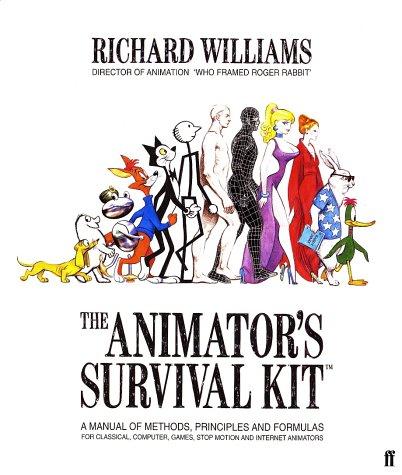
Maryanne Wolf《Proust and the Squid》
书刊介绍
内容简介
Anyone who reads is bound to wonder, at least occasionally, about how those funny squiggles on a page magically turn into "Bare ruined choirs, where late the sweet birds sang" or "After a while I went out and left the hospital and walked back to the hotel in the rain." Where did this unlikely skill called reading come from? What happens in our brain when our eyes scan a line of type? Why do some of us, or some of our children, find it difficult to process the visual information held in words?
In Proust and the Squid, Maryanne Wolf, a professor at Tufts University and director of its Center for Reading and Language Research, offers explanations for all these questions, but with an emphasis that is "more biological and cognitive than cultural-historical." This means that Wolf focuses on the physiological character of the human brain, which holds at its disposal "three ingenious design principles: the capacity to make new connections among older structures; the capacity to form areas of exquisitely precise specialization for recognizing patterns in information, and the ability to learn to recruit and connect information from these areas automatically." These "design principles" provide the neuronal foundation of reading, and Wolf spends half her book explaining the evolution and minutiae of this "reading brain."
Nearly all this material makes for very hard slogging, even though Proust and the Squid is confidently described as the author's "first book for the general public." (The catchy but utterly uninformative title, by the way, refers to the novelist's impressionistic thoughts about childhood reading and a scientist's use of the squid brain for neurological research.) A work of popularization needs a light clear style, lots of anecdotes and some plot or story line that moves along at a good clip. At times, Wolf makes a stab at including some human-interest element or personal example, but all too soon she reverts to her normal prose, which is austere, technical and, finally, wearisome:
"In a pathbreaking meta-analysis of twenty-five imaging studies of different languages, cognitive scientists from the University of Pittsburgh found three great common regions used differentially across writing systems. In the first, the occipital-temporal area (which includes the hypothesized locus of 'neuronal recycling' for literacy), we become proficient visual specialists in whatever script we read. In the second, the frontal region around Broca's area, we become specialists in two different ways -- for phonemes in words and for their meanings. In the third, the multifunction region spanning the upper temporal lobes and the lower, adjacent parietal lobes, we recruit additional areas that help to process multiple elements of sounds and meanings, which are particularly important for alphabetic and syllabary systems."
Out of context such prose sounds perfectly dreadful -- and in context sadly characteristic of the writing in professional journals, no matter what the field. In fact, everything Wolf says makes sense, the specialized terms she uses have been previously defined, and there are line illustrations on a facing page. Nonetheless, such technical onslaughts are extremely tiring to read, and Wolf seldom lets up on the information-rich barrage for very long. At different points she does quote passages from Proust and George Eliot, but even these two great novelists are hardly what you'd call sprightly, and they merely add their own specific gravity to already forbidding pages.
In the second half of the book, Wolf examines the reading difficulties generally subsumed under the term dyslexia. We learn that one of her sons suffers from this disability, that there are various forms and theories about its origin and character, that it can sometimes result in a special talent for fields that emphasize pattern and spatial creativity (such as art, design and engineering) and that "programs which systematically and explicitly teach young readers phoneme awareness and grapheme-phoneme correspondence are far more successful in dealing with reading disabilities than other programs." As this last sentence makes evident, no relief awaits the once-eager reader who by this point has begun to wonder if he could be suffering from a sudden case of adult-onset dyslexia.
Despite Wolf's failure to write a truly popular book, she clearly does know her stuff, and those professionally involved with the teaching of reading might be more patient than I. In particular, she addresses the special needs of children raised in cultures where standard English isn't the dominant language, and she speculates, with real concern, about the impact of computer culture on the "reading brain." Dyslexia has taught her that humans were never genetically designed to read, and this peculiar technique of sustained mental attention could be reduced, reconfigured or even lost in the rising digital age:
"Will unguided information lead to an illusion of knowledge, and thus curtail the more difficult, time-consuming, critical thought processes that lead to knowledge itself? Will the split-second immediacy of information gained from a search engine and the sheer volume of what is available derail the slower, more deliberative processes that deepen our understanding of complex concepts, of another's inner thought processes, and of our own consciousness?"
Wolf never fully answers these questions, though they strike me as the basis for a much needed book. Still, like any parent with a child transfixed by flashing screens, she is troubled by what she observes. She urges that we "teach our children to be 'bitextual' " or 'multitextual,' able to read and analyze texts flexibly in different ways" so that our sons and daughters don't end up as mere "decoders of information," distracted from the "deeper development of their intellectual potential." Early on in Proust and the Squid, she had noted that infants and toddlers who aren't told stories by their caregivers, who aren't read to from a very early age, nearly always fail to learn to read well themselves. By implication, it may already be too late for many young people: They will never be able to read with the same thoughtfulness and comprehension as their parents. Think about that.
相关推荐
-

师夷长技
《师夷长技》内容简介:本书为两卷本《中国近现代科技转型的历史轨迹与哲学反思》之第二卷。自晚清直至民国,内忧外患,形势艰危,
-
![[美] 格罗夫《SQL完全手册》](http://oss.shudanhao.com/caiji/chazidian/2023/17.jpg)
[美] 格罗夫《SQL完全手册》
本书为专业和非专业用户、程序员、数据处理方面的专业人士和希望理解sQL在今天计算机产业中的影响的经理们提供了关于SQL语言的全
-

Oracle Exadata技术详解
《Oracle Exadata技术详解》内容简介:本书假定读者对关系型数据库,尤其是Oracle数据库有一定程度的了解,否则有可能对书中的某些
-

地方政府的战略成长
《地方政府的战略成长》内容简介:改革开放40年来,城市府际治理在区域经济社会发展与公共事务治理中起到了关键性推动作用。本书以
-

姚剑清《简明数字信号处理》
数字信号处理(DSP)广泛应用于通信、电子、自动控制等方面,并日益显示出其重要性。本书旨在帮助更多的工程师掌握DSP的基本概念
-

萨师煊|王珊《数据库系统概论(第四版)》
《数据库系统概论(第4版)》第1版、第2版和第3版分别于1983年、1991年、2000年出版。第3版被列为“面向21世纪课程教材”,第4版是
-

《三联生活周刊》《MEMO2015》
2015,中国以“一带一路”为纽带,选择和平与共享的方式,重新缔造与世界的关系;抗战胜利日大阅兵,对应的是70年前中国以血肉之
-

鸟哥《鸟哥的Linux私房菜》
本书是最具知名度的Linux入门书《鸟哥的Linux私房菜基础学习篇》的最新版,全面而详细地介绍了Linux操作系统。全书分为5个部分:
-

全面图解电动自行车和三轮车维修
《全面图解电动自行车和三轮车维修》内容简介:本书为“杰出电工系列丛书”之一,全书共分10章,主要内容包括电动自行车基础知识,
-

James Noble & Charles Weir《内存受限系统之软件开发》
PDA软件市场不但巨大,而且持续成长。五年之内,全世界将有大量人口使用精明时髦,可上网的移动电话。每个家庭都有一台PC?!或许
-

SolidWorks快速入门教程
SolidWorks快速入门教程 本书特色 本书是学习SolidWorks2016中文版的快速入门与提高教程,内容包括SolidWorks2016功能概述、软件...
-

摄影大讲堂
《摄影大讲堂》内容简介:本书是一本通俗易懂的摄影入门书,系统、全面、深入浅出地讲述了摄影的各个方面。从器材与原理到光圈、快
-

珍妮特·科南特《塔克西多公园》
《塔克西多公园》内容简介:阿尔弗雷德·李·卢米斯是一位英俊、才华杰出而又性情古怪的金融家。他的发家和崛起在充满赌博投机的
-

写给数据产品经理新人的工作笔记
《写给数据产品经理新人的工作笔记》内容简介:本书的目标在于,为数据产品从业新人或准备转行做数据产品的读者提供一个本领域的通
-

CAD/CAM专业英语
CAD/CAM专业英语 本书特色 本书详细地介绍了机械类计算机辅助设计专业学生应掌握的专业术语英语表示方法。内容包括金属材料及热处理、锻压、焊接、金属切削机床、...
-

文化治理与文化创新
《文化治理与文化创新》内容简介:本书系统研究文化治理与文化创新,确定文化的定位与定向,阐述文化自觉与文化自信,分析文化系统
-

基于云计算的地学数据集成与应用
基于云计算的地学数据集成与应用 内容简介 为了解决地学领域多源、异构、分散、多维数据集成与应用问题,本著作系统深入地研究了采用云计算的SOA框架实现地学空间数据...
-

Siarto Jeff《Head First WordPress》
Whetheryourepromotingyourbusinessorwritingaboutyourtraveladventures,"HeadFirstWo...
-

cdma2000 1x EV-DO系统、接口与无线网络优化
《cdma2000 1x EV-DO系统、接口与无线网络优化》内容简介:《cdma2000 1x EV-DO系统、接口与无线网络优化》从EV-DO的各种技术版本...
-
![[美] Michael Janda《Burn Your Portfolio》](http://oss.shudanhao.com/caiji/chazidian/2023/863.jpg)
[美] Michael Janda《Burn Your Portfolio》
Ittakesmorethanjustadesignschooleducationandakillerportfoliotosucceedinacreative...





